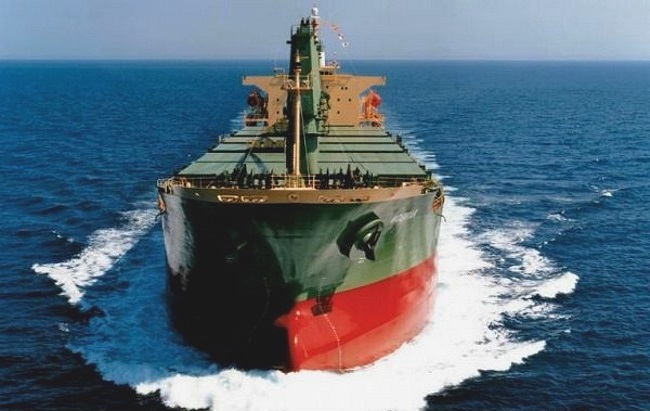Participants in the Atlantic Supramax dry bulk freight market said they expect rate spikes on all routes going into the second qurter of the year, despite weak demand in the first three months of the year, amid trading volatility as supply-demand imbalances persist in the basin.
The US Gulf Coast region suffered substantial losses in both trans-Atlantic and fronthaul key routes at the beginning of the first quarter, as negative fundamentals blanketed the basin. Regional fleet imbalances and subdued shipping demand to the Far East amid the Lunar New Year break in January put grain and petcoke spot freight rates under bearish pressure.
“I do think we are not far from a bottom, the [Lunar] New Year is becoming something of a self-fulfilling prophecy as everybody expects things to change afterwards,” a ship operator said. “I think the market will pick up as we near the end of January/beginning of February. I am skeptical whether the Supramax market will almost double by the second quarter.”
In the US Gulf Coast petcoke spot market, all prospects for an improvement in the dry bulk segment were related to the scale of recovery in Chinese import demand, with fronthaul petcoke spot freight rates ending the negative momentum in mid-February. The Houston-Qingdao 50,000 mt fronthaul petcoke route last traded at $39.00/mt on April 11, up more than 18% from this year’s low of $33/mt on Feb. 14. The same trend was seen for the 50,000 mt Houston-Krishnapatnam petcoke route, which last traded at $40.25/mt on April 11, also more than 18% above this year’s low of $34/mt on Feb. 7.
“Prices of coal are falling almost daily, giving a lot of options to buyers, while petcoke has started to weaken amid improved availability from March,” a trader said.
The 50,000 mt trans-Atlantic petcoke New Orleans-Iskenderun route last traded at $23.75/mt April 11, more than 21% higher than this year’s low of $19.50/mt on Feb. 7.
Meanwhile, the petcoke market was reported as healthy, with activity a bit softer while a spread of three extra laden vessels showed the regional fleet balanced at the end of the first quarter. There were 39 reported laden and 36 ballast Supramax ships, according to data from S&P Global Commodities at Sea.
In East Coast South America volatility persisted. Grain runs faced negative margins from the start of 2023, with fresh grain cargoes remaining at a minimum, pushing spot rates lower for both fronthaul and trans-Atlantic grains runs, with the latter hitting its lowest since Nov. 2, 2020, when Platts started assessing the route.
The pause in grain cargoes on Supramaxes moving to the Mediterranean and the dominance of the Panamax size to fix any available grain cargo resulted in bearish sentiment and consecutive declines.
Trans-Atlantic time-charter rates for the 40,000 mt Recalada-Bejaia grains route hit a multiyear low on Jan. 23 at $7,139/d, with the previous low at $11,114/d Nov. 11, 2020, according to S&P Global Commodity Insights data.
Argentina, as a major global supplier of agricultural products, saw grain export prospects diminish thanks to the country’s worst drought in decades.
Meanwhile, spot rates finally found a floor mid-first quarter, with grain runs setting the pace to rescue the Supramax segment as prompt tonnage cleared out and more fresh cargoes entered the market.
Time charter rates basis bunker fuel 0.5%S for the 40,000 mt grains Recalada-Bejaia route was last assessed at $18,092/day on April 11, up from the quarter’s lowest rate of $7,139/d on Jan. 23, according to S&P Global data.
Given the anticipated combination of a strong soyabean crop in Brazil and the strength of the dollar, the onset of Brazil’s soybean export season may offer more positives for Panamax demand.
In the Continent and Baltic Sea trading area, scrap spot rates seemed to have frozen amid a lack of fresh inquires, while the end of February experienced bullish sentiment.
The spot market saw losses of 35% in the first two months of the year. Platts assessed the spot market at $10,043/d on Jan. 3, with the lowest spot rate of the first quarter at $6,454/d on Feb. 7, according to S&P Global data.
The Turkish deepsea imported scrap market was quiet in the wake of the earthquake that hit southern Turkey and damaged the port of Iskenderun, with some mills having shut down and adding further pressure to rates.
Meanwhile, the negative mood reversed with increased activity in March as CFR Turkey scrap prices rose, mostly for end-March or H1 April loading, according to market sources.
Time charter rates basis bunker fuel 0.5%S experienced some strength in the Rotterdam-Aliaga 40,000 mt scrap run in the mid- to end-first quarter, last trading at $12,042/d on April 11, almost double the year’s low of $6,454/d on Feb. 7.
All eyes on Chinese appetite
The dry bulk market saw some profits at the end of the quarter after China reopened its borders, while dry bulk freight rates recovered amid economic and policy announcements by China.
Similarly, the Supramax segment experienced an upturn as China reopened its manufacturing sector.
According to S&P Global Commodities at Sea, the Chinese government’s effort to stabilize the economy will likely benefit the infrastructure sector rather than real estate as the latter may face some doubts from the proposed budget plan and expanding fiscal spending in 2023.
As minor bulk shipments stabilize, the Supramax segment may face more downside hazards. The momentum of Chinese steel exports looks set to end in 2023 as high inflation puts Europe under pressure.
The bullish scenario could be seen in the third and fourth quarters in case fundamental demand develops in line with mainland China’s economic recovery. Uncertainty persists as Black Sea grain corridor renewed.
MOre than a year has passed since Russia invaded Ukraine and the UN-brokered Black Sea Grains Initiative remains a significant challenge to keep grains flowing in the region, with Handysize dry bulk ships the favored size while uncertainty persists.
The renewal of the initiative in March is still causing doubts, with the exact duration of the extension unclear, with market sources pointing to a period of 60 days rather than 120.
“Trading spreads are too big, our clients don’t find prices attractive to sell,” a Ukrainian charterer said. “The reality so far is by far underperforming our expectations.”
As Russia is not selling to Europe, the lion’s share of Handysizes is going to the Italian Adriatic and Spanish Mediterranean regions.
The East Coast South America region, particularly the Brazilian grains market, will continue to support ton-mile demand for Continent imports as Argentina’s drought, high temperatures and then frosts have battered crops this season, according to market sources.
“A large soybean harvest in Brazil followed by a significant second corn harvest is adding volumes to the market,” a market source said.
The region’s Agribulk will continue to be the driving factor behind strong Supramax shipments as well as for bigger dry bulk vessels.
Source: Hellenic Shipping News






